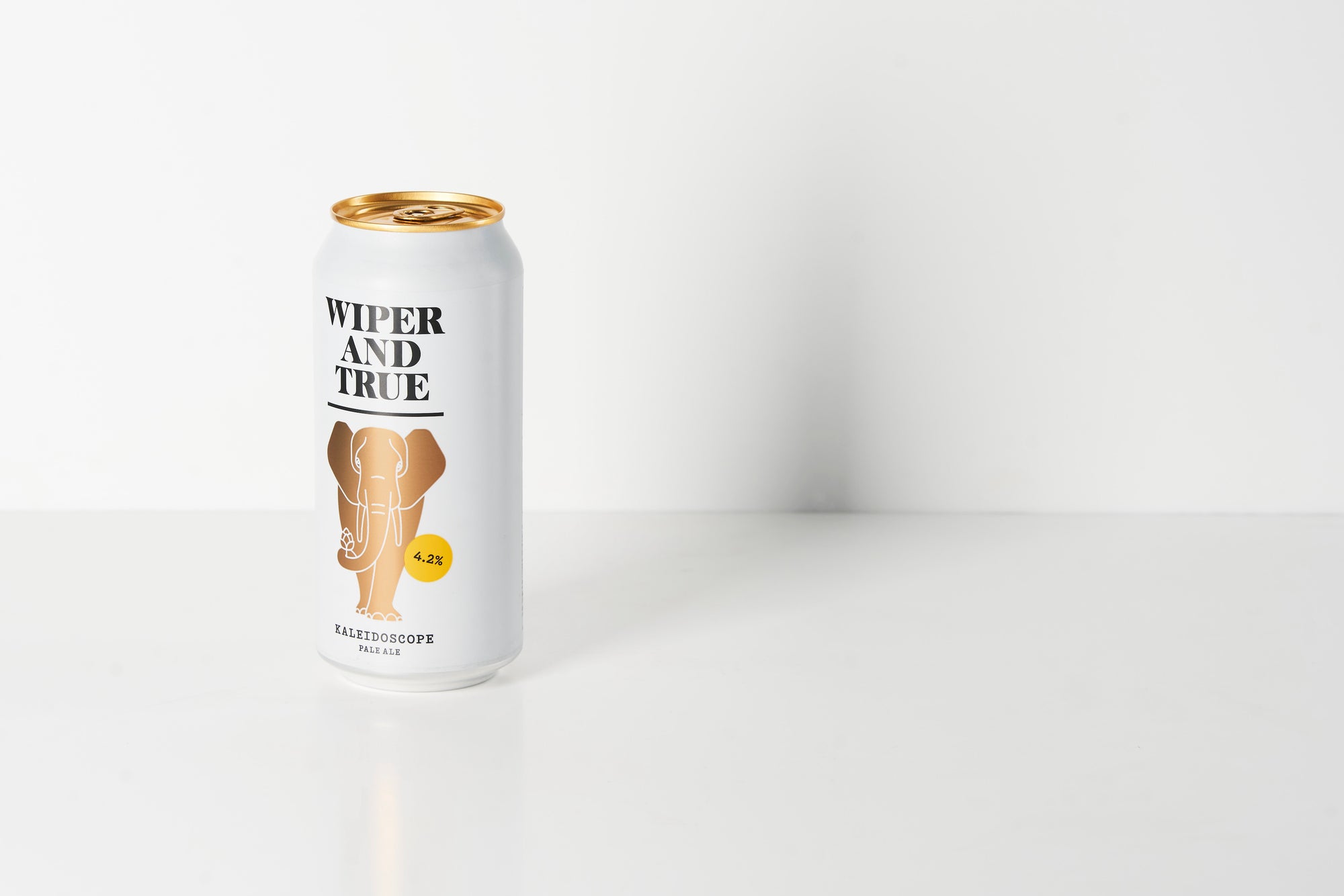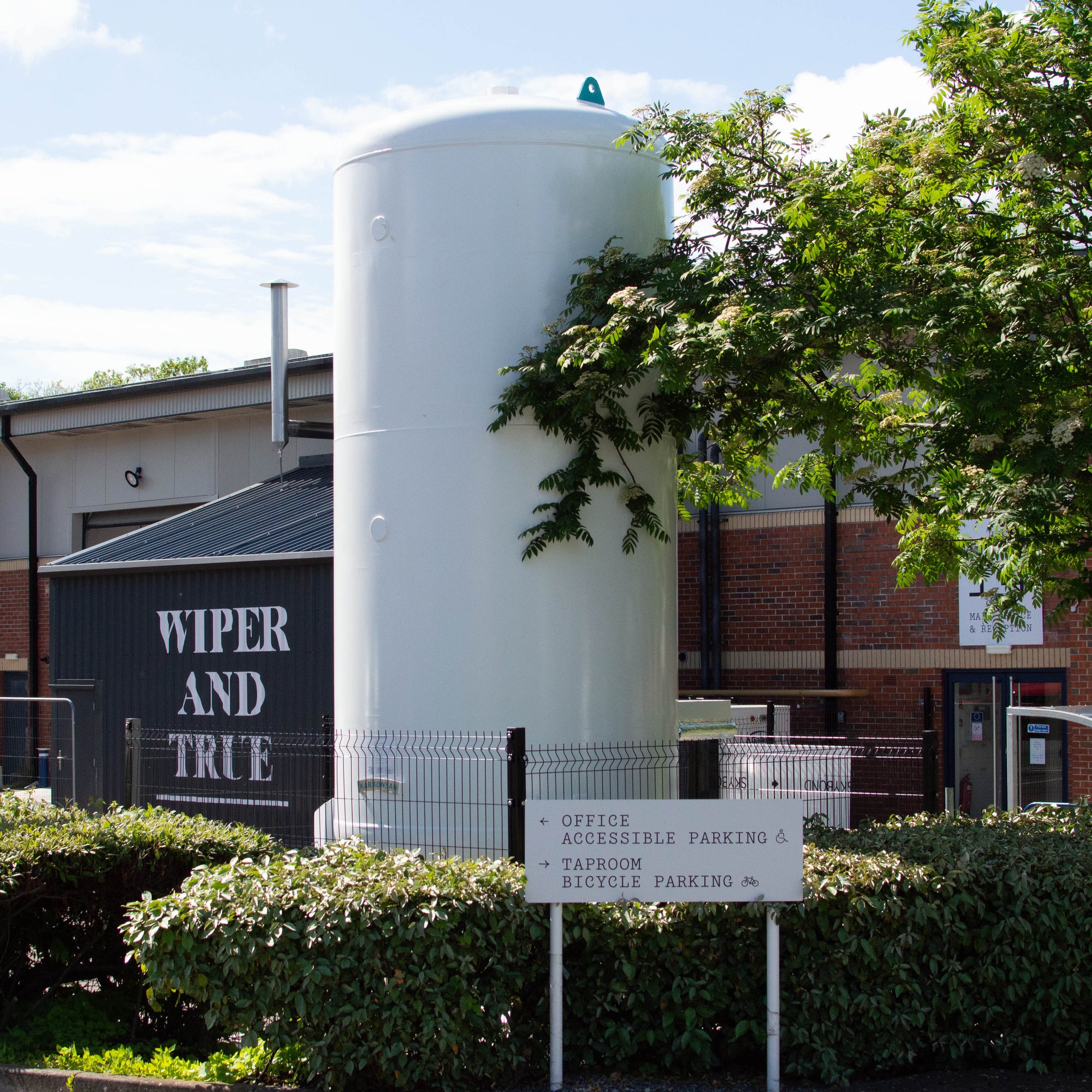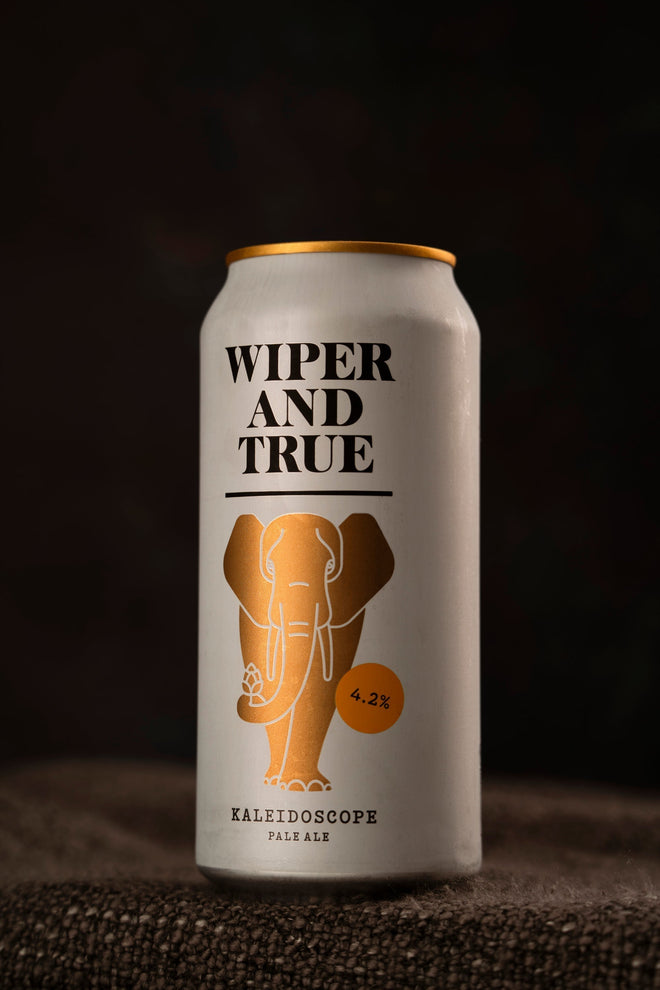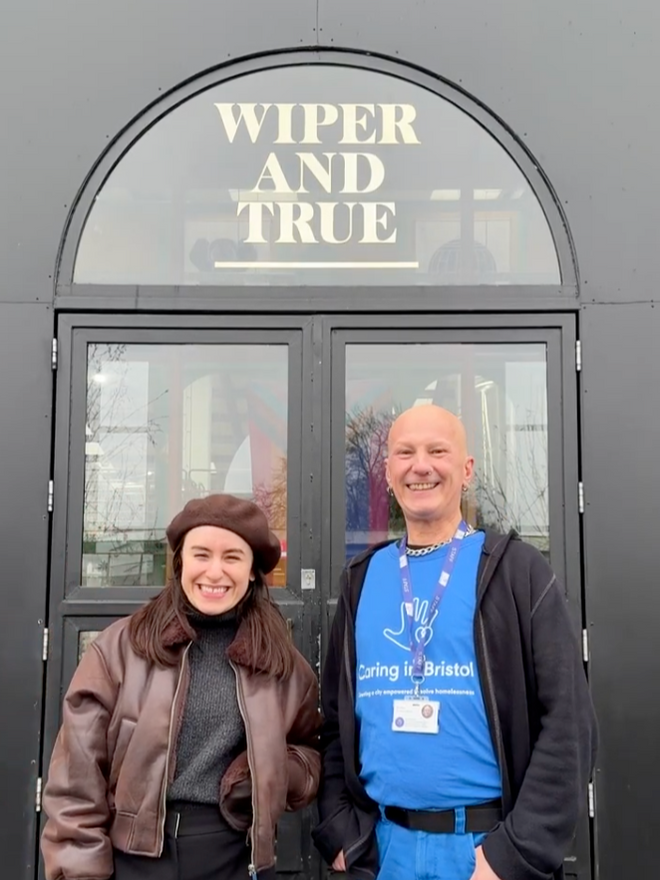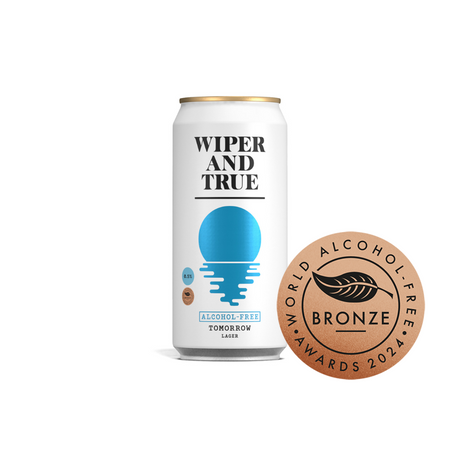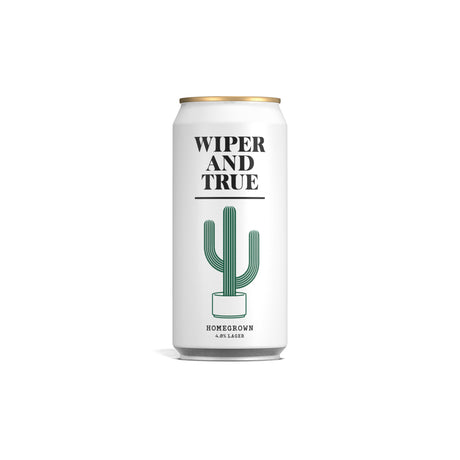Fermentation is at the epicentre of every brewery. Without it, there is no beer. In very simple terms, the fermentation process is as follows:
- Yeast eats sugars contained within malt grains, and produces alcohol and CO2
- The alcohol stays in liquid form, and transforms malty liquid (wort) into beer
- During fermentation, CO2 bubbles out of fermentation vessels in gas form, wafting away into the atmosphere, without serving a useful purpose
That third bullet point has been a bone of contention at Wiper and True for a while now, and sits at the heart of an incredibly exciting project that the Wiper and True sustainability and production teams have been hard at work on for several months. Since we first began brewing, we, like most small to medium size breweries, let the CO2 bubble out of fermentation vessels into the atmosphere. This is the way we’ve always done things, and had never really considered what could be done differently. Until now.

Above: carbon dioxide bubbling out from a fermentation vessel into a bucket of water, where it then dissipates into the atmosphere
LOOKING AHEAD: DOING THINGS DIFFERENTLY?
In the process of building our new brewery, we thought long and hard about the best investments we could make into becoming a more sustainable business. Something that jumped out straight away was the possibility of carbon capture: that is to say, recapturing the carbon dioxide produced as a byproduct of fermentation, rather than letting it drift away into the atmosphere as a wasted byproduct. Once ‘caught’, the gas can be stored in a large tank, before being used for other parts of the brewing and packaging process. Carbon capture got us really excited, chiming with our passion for the circular economy approach, looping an effective waste stream back into our business for reuse. This has two very clear, very appealing benefits, both of which help build a more sustainable business, in the holistic sense of the word: independence and resilience.
CLOSED LOOP CARBON CAPTURE TECHNOLOGY: INDEPENDENCE & RESILIENCE
Until now, the carbonation of our beers (the injection of carbon dioxide is what gives beer its characteristic fizz) has depended on us purchasing carbon dioxide from a third party; a volatile market that’s often susceptible to shortages and price surges. Through installing carbon capture technology, we cut our dependence on this third party, giving us end-to-end control of CO2 use in the brewery. This in turn produces a financial benefit, saving us money which we can then reinvest to fund yet more sustainable projects. Carbon capture technology also builds our business’s resilience, reducing our exposure to extreme fluctuations in CO2 prices.
THE HUNT WAS ON
Once we’d realised the potential of carbon capture, we began our hunt for a machine that would suit our size of brewery. Most of the technology available had historically been built for huge macro breweries, and cost an eye watering amount of money. Luckily for us two machines that perfectly suited smaller breweries had just been launched onto the market, representing huge advancements for the industry. After much research, we opted for the Dalum unit, produced in Denmark. Designed and manufactured by Kim Dalum who had previously worked for a company making these large and expensive machines. Using his expertise, he downsized the technology to work on a small scale.

Above: our beautiful new carbon capture unit, proudly installed at our Old Market brewery
In a nutshell, the technology captures the CO2 from fermenting beer, washes out the impurities, compresses the gas to high pressures, condenses out unwanted gases (oxygen) to purify it further, liquifies the CO2 and pumps it back into our CO2 cryogenic tank, ready for reuse in carbonating the beer, purging tanks and in the sterile packaging process. We are delighted that this equipment has now been installed and is successfully up and running in our Old Market production site.

Above: Pipework to transport carbon dioxide around the brewery
A MORE SUSTAINABLE FUTURE
So what does this all mean for the sustainability of our brewery? Well, aside from giving us security and independence, the technology also effectively reduces our carbon footprint. The more carbon dioxide we can capture when we ferment, the less is added to the atmosphere at our hands.
The Dalum carbon capture unit we have now installed has capacity to capture roughly 60-70 tonnes of CO2 per year. At Wiper and True, this allows us to capture carbon dioxide produced as a byproduct of almost every beer we’re currently producing, and also covers us for our future growth, when we’ll be brewing even more beautiful beer. When such time comes that we are brewing so much beer that we need to capture more CO2, we can create more capacity by installing a second Dalum unit.

Above: dials and controls for the new carbon capture equipment
We strongly believe that this technology is the future of sustainable brewing, and are delighted to be at the forefront of testing out these new machines; ours is the second unit to be successfully installed in England. The first brewery to commission the unit was Gadds’, the Rasmgate Brewery over in Kent. We couldn’t think of a better way to celebrate this massive leap forward in brewing sustainability than brewing a beer with Gadds’ themselves; our collaborative classic best bitter will be out at the end of May.
Here’s to Kim and his team at Dalum, and a more sustainable brewing future.

